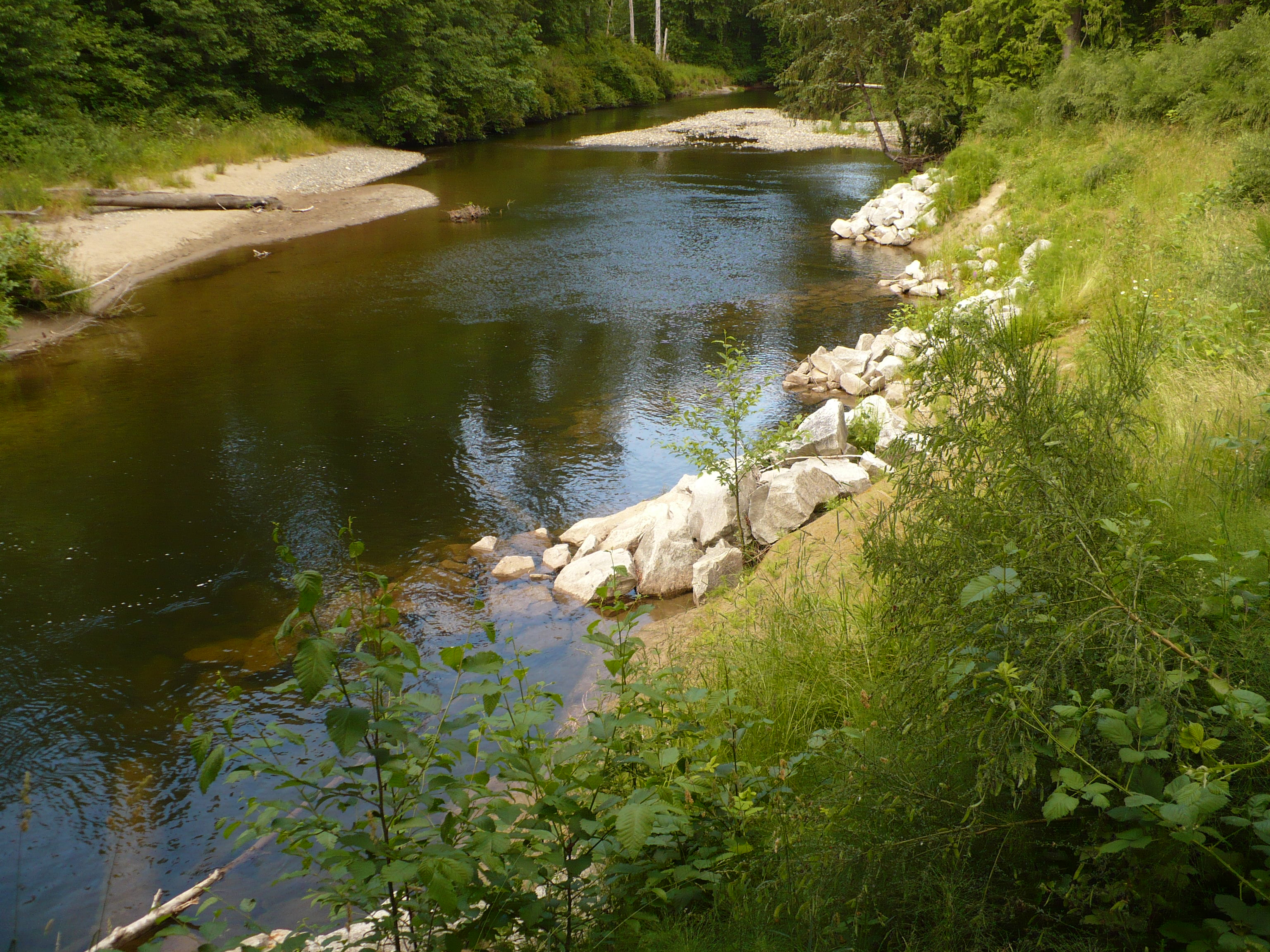
Fish friendly River Bank Erosion ProtectionConventional civil engineering bank protection has usually been done by re-sloping the bank, and then applying a thick layer of blast rock (riprap) from the toe of the bank up to the appropriate flood level, such as the 200 year return period flood. Where the current is very fast and the bank is eroding towards valuable buildings or infrastructure, this more solid and certain method can still be the best approach. Problems in use of riprap include a lack of habitat diversity along the bank, and increased flow velocities along the riprap being passed downstream, where further erosion can be initiated. Riprap slopes can be modified to reduce flow velocities and provide some fish habitat. However, on lower gradient streams and rivers, an alternative approach of a series , or field, of bendway weirs or stream barbs slows flow velocities along the eroding bank, which with vegetation planting on the river bank stabilizes the bank. Bendway and stream barb weirs create more diverse fish habitat, and reduce flow velocities passed downstream. Weirs require regular inspection, and maintenance if required, to function properly over the long term. Each situation requires a slightly different design and construction to function properly. Gooding Hydrology is a leader in weir field design and construction. |
Stream Barbs, Tsolum River
Bendway Weirs, Tsolum River |
Dave Gooding, P.Eng., | 681 Rainbow Road, Saltspring Island BC, V8K 2M6 | Phone: 250 538-1869 | Email: dgooding@saltspring.com

